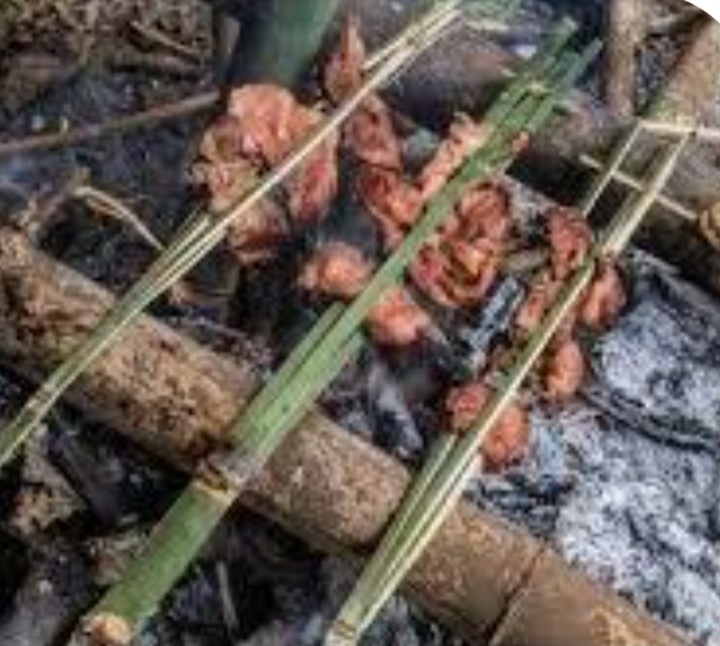Inadequate cooking is a common cause of food poisoning. Cross-contamination from raw to cooked foods, such as from hands, chopping boards or utensils, can also cause food poisoning.
Most foods, especially meat, poultry, fish and eggs, should be cooked thoroughly to kill most types of food poisoning bacteria.
Cooking may enhance or degrade the availability of different nutrients. Cooking may therefore affect the nutrient value of food either beneficially, or negatively. Most foods of animal origin could be digested raw by man,
But raw meats and fish are usually particularly unpalatable.
Early humans had strong jaws to chew the raw vegetables and meat that made up their diet.
Here’s some more information about early human diets:
Early hominins
The earliest hominins were likely omnivorous, eating large amounts of fruit, leaves, flowers, bark, insects, and meat.
Paleolithic diet
The Paleolithic diet, which lasted roughly 2.8 million years, included multiple human ancestors with their own evolutionary and technological adaptations.
Starchy vegetables
Evidence from fossilized hominids shows that early humans ate lots of starchy vegetables.
Plant-based diet
For the first half of human history, hominins were plant-based, with no evidence of eating meat until nearly three million years after the start of our lineage.
“If you are really desperate there is a protocol to follow on trying to find edible plants. It is called the Universal Edibility Test. It is used to see if a wild plant is safe to eat. First, choose only one part of a plant at a time, starting with leaves, then stem, then seeds, then roots. You should only eat roots if they are tubers and you shouldn’t eat anything else if you find a plant with edible leaves; in other words once you find something that works stick with it and try all the leaves of plant first. Consider the location of the wild plant; plants that are near the highways or roadways are covered with pollution. Plants near farms are sometimes contaminated with chemicals. Plants near the waterways might be contaminated with parasites. Take the part of the plant you are testing and boil it for 20 minutes after washing it with clean water.
If at any point in the process (harvesting, cleaning, boiling) the plant smell like almonds, don’t eat it. It is most likely poisonous.

The test starts by fasting for about 8 hours. During the 8 hour period, place the leaf of the plant on your skin;observe if there are any reactions. After that, place the leaf against your lips and then wait for three minutes. If there is no burning or itching developed, you can now place the leaf in your tongue for 15 minutes and then chew it for another 15 minutes, do not swallow it. If there aren’t any reactions or irritations, you can now swallow the plant. Wait for 8 hours to see if there are any signs of sickness. If it turns out that everything is fine, eat 1/4 cup of the plant and then wait for another eight hours for any signs of sickness. If everything is fine, the plant is most likely safe to eat.”


